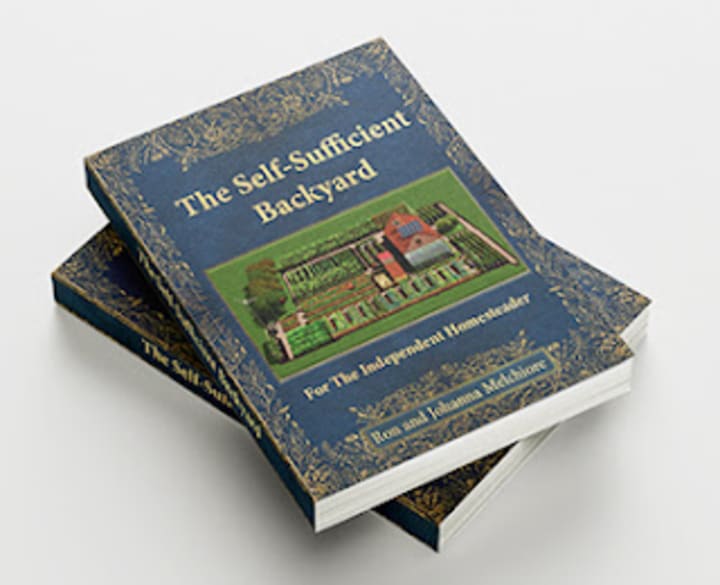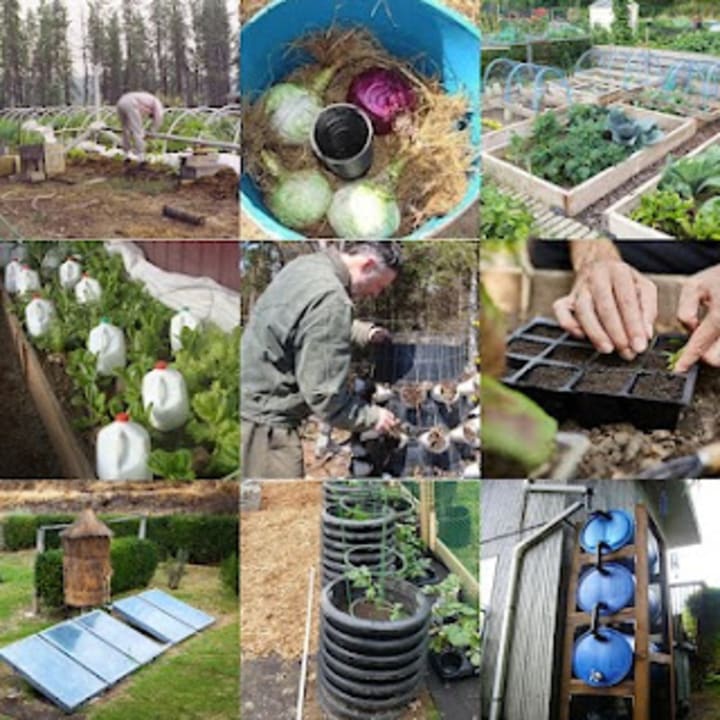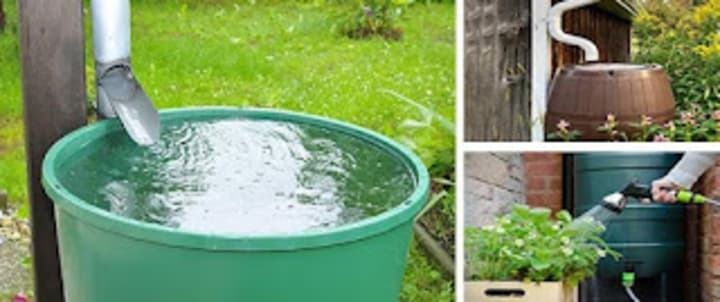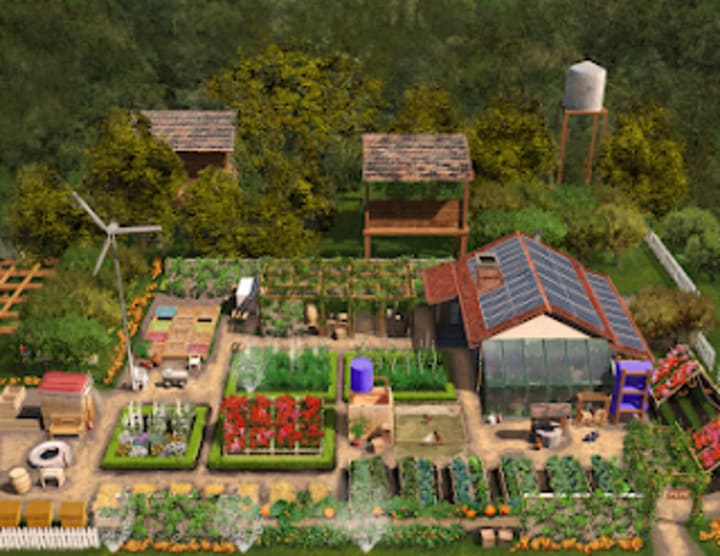Embracing Self-Sufficiency: Transforming Your Backyard into a Productive Homestead
Life Skills are not hard to Learn

In today’s fast-paced and uncertain world, many people are turning towards self-sufficiency as a means to ensure their own security and independence. Whether driven by economic necessity, environmental concerns, or a desire for a more sustainable lifestyle, the idea of transforming a typical backyard into a productive homestead is gaining traction. “The Self-Sufficient Backyard” by Ron and Johanna Melchiore is a comprehensive guide that provides the knowledge and practical steps needed to achieve this transformation on just a quarter acre of land.

The Rise of Self-Sufficiency
The concept of self-sufficiency isn't new. Historically, many households relied on their own resources to meet their needs, growing food, raising livestock, and producing essential goods. However, with the advent of modern conveniences and urban living, these practices have dwindled. The current resurgence in self-sufficiency is fuelled by various factors:
- Economic Uncertainty: With fluctuating economies and job markets, having a self-sufficient lifestyle offers a safety net.
- Environmental Concerns: Many people are looking to reduce their carbon footprint and live more sustainably.
- Health Benefits: Growing your own food ensures access to fresh, organic produce, free from pesticides and preservatives.

Transforming Your Backyard: Key Projects
“The Self-Sufficient Backyard” outlines over 100 DIY projects that can help transform your backyard into a self-sustaining oasis. Here are some key projects featured in the book:
1. Self-Heating Year-Round Greenhouse
- A greenhouse that utilizes passive solar heating techniques to maintain a stable temperature, allowing for year-round gardening.
2. Mini Chicken Coop
- A compact chicken coop design that fits in just eight square feet, providing fresh eggs and poultry without requiring much space.
3. Windowsill Medicinal Garden
- Grow medicinal herbs right on your windowsill to create natural remedies for common ailments.
4. Battery Rejuvenation
- Techniques to extend the life of batteries, reducing waste and saving money.
5. Independent Water Source
- Methods for harvesting and purifying rainwater, ensuring a reliable supply of clean water even in emergencies.

6. Root Cellar
- Building a small root cellar under your kitchen to store vegetables and other perishables without refrigeration.
7. Indoor Food Growing Systems
- Ingenious systems for growing food indoors, making the most of available light and space.
8. Backyard Beehive
- Setting up a beehive to produce honey, support pollination, and boost garden yields.
9. DIY Pressurized Water Stove
- A stove modification that provides free, hot, pressurized water.
Benefits of a Self-Sufficient Backyard
1. Economic Savings
Implementing these projects can lead to significant savings. By growing your own food, producing your own energy, and using DIY methods to extend the life of household items, you can drastically reduce your monthly expenses. The initial investment in time and materials is quickly offset by the ongoing savings and the security of having essential resources readily available.
2. Environmental Impact
A self-sufficient backyard contributes to a reduction in carbon footprint. By growing food locally, you reduce the need for transportation, packaging, and storage, all of which are energy-intensive processes. Additionally, practices like rainwater harvesting and composting help conserve resources and reduce waste.
3. Health and Wellness
Fresh, home-grown produce is often more nutritious than store-bought counterparts. By eliminating the use of pesticides and chemicals, you ensure that your food is healthy and safe. Moreover, the physical activity involved in maintaining a backyard homestead can improve overall fitness and mental well-being.

Practical Considerations
1. Space Utilization
One of the primary challenges of backyard homesteading is maximizing the use of available space. “The Self-Sufficient Backyard” provides detailed plans and illustrations to help you efficiently use every square foot. Vertical gardening, container planting, and multi-purpose structures are some of the strategies discussed.
2. Initial Setup and Maintenance
Starting a backyard homestead requires an initial investment of time and effort. Preparing the soil, setting up structures, and learning new skills can be daunting. However, the book offers step-by-step instructions that make these tasks manageable. Once established, many of the systems require minimal maintenance, allowing you to enjoy the fruits of your labour without being overwhelmed.
Legal and Zoning Issues
Before embarking on any significant changes, it’s essential to check local zoning laws and regulations. Some areas have restrictions on livestock, building structures, or even harvesting rainwater. The book provides guidance on navigating these legalities to ensure your projects are compliant.
Real-Life Success Stories
Ron and Johanna Melchiore, the authors of “The Self-Sufficient Backyard”, share their own experiences of living off-grid for over 40 years. Their story is not only inspiring but also provides practical insights into the challenges and rewards of self-sufficient living. They demonstrate that with perseverance, creativity, and the right knowledge, anyone can achieve a high degree of self-sufficiency.
Conclusion
Transitioning to a self-sufficient lifestyle is a journey that requires dedication and a willingness to learn. “The Self-Sufficient Backyard” serves as an invaluable resource, offering practical projects, detailed instructions, and real-life insights. Whether you are motivated by economic factors, environmental concerns, or a desire for a healthier lifestyle, this book provides the tools and knowledge to transform your backyard into a productive, self-sustaining homestead.
By taking small steps and gradually implementing these projects, you can achieve greater independence and resilience. Embrace the challenge, enjoy the process, and reap the benefits of a self-sufficient backyard.
By Keith W. Barton

About the Creator
Keith William Barton
I'm a 50, Born and raised in Zimbabwe and currently live in South Africa. Life is on the hard side and the more You know about "Making a Plan" the better off you're going to be.
Enjoyed the story? Support the Creator.
Subscribe for free to receive all their stories in your feed. You could also pledge your support or give them a one-off tip, letting them know you appreciate their work.






Comments
There are no comments for this story
Be the first to respond and start the conversation.